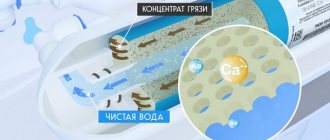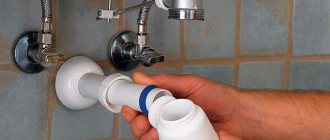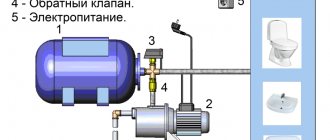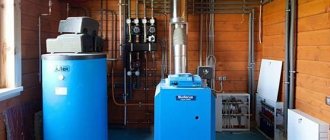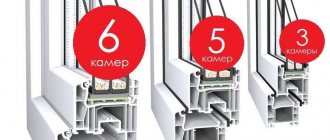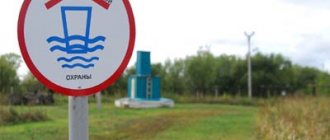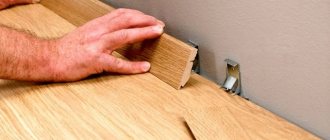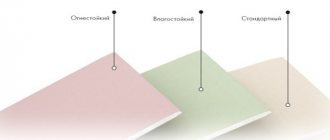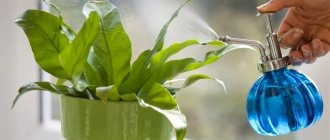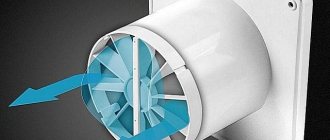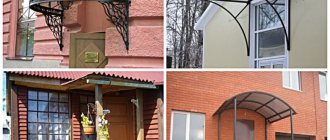Currently, it is important to independently monitor the quality of drinking water. You shouldn’t rely on the water supply, since public utilities do not always maintain it at the proper level. A good owner will always take care of installing a filter to purify water intended for drinking and cooking. This device will ensure the removal of chemical compounds and mechanical impurities from it, improving taste and maintaining human health. We invite you to learn how to install a water filter yourself without contacting specialists.
The modification of the filter device is selected depending on the nature of the contaminants, the volume of water consumed, and the conditions of use.
Advice: before purchasing, you should find out whether it is possible to purchase replacement filter cartridges and the necessary spare parts in the future.
If you only need a little water, you can use a pitcher filter. It is also useful when traveling to the country or to nature, since it is compact, portable, does not require installation, and the filter element is installed in the jug in one motion.
Water filters - device features, functions, installation requirements
A filter is a device for purifying a water stream, the main filter element of which is a special cartridge. Their quantity and functionality may vary, depending on the required degree of purity and the initial composition of the water. As a rule, modern filters are equipped with 2 to 6 cleaning stages and the corresponding number of filter modules.
A modern filtration system can perform one or more of the following functions:
- Retention of mechanical particles using a carbon filter.
- Iron removal.
- Filtration from coarse solids.
- Softening by removing hard salts.
- Fine purification using a reverse osmosis system.
- Optimization of the mineral composition of water when passing through special mineralizers.
- Disinfection using ultraviolet illumination.
Diagram of the device and principle of operation of the reverse osmosis filter Source dialog.ua
In this case, the device is equipped with the following main parts:
- A fastening mechanism that allows you to install a water filter in a manner appropriate to the design - on a faucet or to the wall under a sink, etc., and subsequently to conveniently operate and maintain it.
- Adapter for connection to the pipeline. As a rule, it is made in the form of a tee and equipped with a valve. Mounted at the insertion point, it regulates the flow.
- Seals to create a hermetically sealed contact at the insertion points.
- Plumbing faucet for mounting on a sink.
In addition, a storage tank may be included in the kit. Its task is to ensure water flow without delay. Since the introduction of a filter element often reduces the pressure, which is especially important with a reverse osmosis system membrane.
Primary requirements
The use of a water filter module in everyday life requires the use of only one consumer. For this reason, they are installed in places where water intake is as private as possible and primarily for food purposes - that is, on a kitchen faucet.
The water filter should be installed in a freely accessible location for easy maintenance Source market.com
The main requirement that must be met is that the device does not fall into the direct field of view, but is accessible for inspection and maintenance. The best place for this is under the sink. In this case, the following conditions must be met:
- The dimensions of the filter unit must be such that it fits freely in the washing space.
- All elements must be mounted so that their filter elements can be easily removed when replacement or cleaning is necessary.
- All important elements for maintenance - valves, flaps, etc. – must be located in a direct access area.
- All parts of the device should not be exposed to heat from hot pipes, batteries, kitchen appliances or direct sunlight.
Advice! For the most comfortable maintenance, so that you can conveniently remove the water filter from the cabinet under the sink, it is best to connect it to the water supply using flexible hoses with a metal braid of sufficient length.
Flexible hoses are used to connect the filter Source ytimg.com
See also: Catalog of companies that specialize in engineering systems (heating, water supply, sewerage and others) and related work
How to properly install a water filter on cold water in an apartment or private house with your own hands
Professionals recommend performing the following operations in turn:
- Do not remove the standard tap; it is useful for cleaning the room and washing dishes. To release drinking liquid, install the second jib, included in the kit, on the opposite side of the sink. Cut a circle of the appropriate diameter in stainless steel and secure the tap with iron nuts, plastic disks and fumig tape.
- Turn off the valve to the general water supply and wait until the residue drains out. Next, using an adapter in accordance with the schematic diagram indicated in the instructions, make a branch.
- Release the metal-propylene hoses for input and output from the closing devices. A hose is placed on the valve inserted into the pipe, through which filtered moisture will flow. To do this, the part must be rested against the wall and pressed on it so that the gap between the boundaries of the valve and the pipe is minimal.
- The drainage outlet must be connected to the sewer, having previously made a passage of the required parameter in it.
- Before starting operation, all connecting points should be checked for sealing.
Criterias of choice
When choosing a water filter for your home, you must consider the following number of criteria:
- Purpose - what specific filtering functions the device should perform - rough cleaning, softening, disinfection, etc.
- Installation location: under the sink, on the faucet, etc.
- Dimensions - must correspond to the installation location so that there are no problems during installation and maintenance.
- The operating principle is flow or reverse osmosis.
- Stationary with the possibility of updating filter elements or one-time use.
- Productivity - depends on the volume of flowing water in a given period of time or the number of people living in the house.
- Price.
- Manufacturer.
On a note! The most convenient to use and the best in terms of degree of purification is a stationary osmotic type filter. To extend its service life, it is enough to replace the filter elements in a timely manner. At the same time, the osmotic system purifies water to the greatest extent from various types of polluting factors - mechanical particles, salts, dissolved substances and microorganisms.
The choice of filter is influenced by both the initial and required quality of consumed water Source make-self.net
In order for the selected filter to work productively, you must follow the rules of use
- Avoid kinking hoses
- Change filter blocks in a timely manner
- Always wash the flask when replacing the filter
- Install carbon filters after dismantling the membrane
- Regenerate ion exchangers within the specified time frame
Attention! When you first turn it on, the water may be cloudy - this is normal. The liquid may also have a bitter aftertaste and this is normal. Before using the water from the filter, it should be drained until completely transparent. Then she will satisfy all the requirements.
Features of installation and use of filters of various types
Modern water filtration systems are manufactured in various variations. Despite the fact that they are all designed for the same purpose - water purification - nevertheless, each subspecies has its own specialized qualities. Thus, household water filters are divided into the following types:
- Rough cleaning.
- Filter attachment.
- Mainline.
- Cartridge.
- For installation under the sink.
- Reverse osmosis.
Let's look at the main features, scope of application, as well as how to connect a water filter in each modification presented.
Coarse filter
In a professional environment, such a filter is also called a mud filter, due to its main purpose - retaining large mechanical particles. Despite the large number of design options, the principles of its installation are the same for all varieties. First of all, these are locations in the plumbing diagram.
Coarse filters installed on hot and cold water supply Source schetchik-poverka.ru
Process nuances
When purchasing a system, you must carefully study the manufacturer’s instructions, which provide the consumer with a step-by-step algorithm of actions. The technological features of the various models are similar, so installing the device will not cause any particular difficulties.
Please note the following:
- Before purchasing a kit, it is advisable to take a sample of the liquid and take it to the laboratory. With the results of the analysis, go to the store, where the managers will select the appropriate option for you with the required filler. You should not take a model that visually appeals to you, as it may not be suitable for your purpose, may not give a positive effect, and will quickly fail due to an incorrectly selected adsorbent.
- Among Russian citizens, two/six-stage units mounted under the kitchen sink in a horizontal or vertical position have become widespread. The only negative is the provision of a large space for replacing toners, which have to be renewed at a certain interval. This means that you will have to take care of free access for maintenance and repair. The entire structure must be positioned so that it is not subject to compression or squeezing, and the plumbing fixtures are in a visible place.
- Be prepared for financial costs, as all system components are not cheap.
Video description
Video instructions for installing a water filter under a sink:
Filter under the sink
This filter is available ready-made - it does not need to be assembled, but it is extremely important to correctly connect and connect to the pipe:
- First, connect the tap to the tee.
- Next, connect the pipe from the water supply.
- The housing is fixed to the wall.
- A tap for clean water is installed.
- Connection to water supply is being made.
Finally, the functionality of the device and the integrity of all connections are checked.
Reverse osmosis
The sequence of installing a reverse osmosis water purification filter is the same as for the option discussed above, with the exception of a few nuances:
- Due to the specific operation of the filter membrane, the device requires a separate tube to be discharged into the sewer system to drain mud sediment.
- Because the flow slows down as it passes through the membrane, pressure support is required. For this purpose, a storage tank is installed to collect purified water.
At the entrance to the storage tank there is a pipe from the filter device, and at the exit there is a tube leading to the tap. In addition, a valve is installed on the tank to shut off the water supply.
Preparatory work
The highest degree of water purification is provided by a reverse osmosis installation.
Before you begin to study the sequence of installing filters, you need to complete all the preparatory measures. They start by assembling some parts of the purification system, which are the plumbing connection. This is a small shut-off valve and tee. This work is carried out in two stages - assembly and installation of the unit on the water supply system.
- Assembling the working unit - inserts.
This stage does not cause difficulties, since it is only necessary to correctly and tightly connect the tee to the tap. One edge of such a tee is equipped with an internal thread of 0.5 inches, the second is external with 0.5 inches, and the third, intended for connection to the shut-off valve, has an internal thread with a smaller diameter. Fum tape or tow is tightly wound around the tap, after which this part is screwed into the tee and fixed well with a wrench. Now is the time to turn off the water supply and begin installing the prepared tap. Insertion of a tee and tap for supplying water to the filter - The next stage is more troublesome, but its implementation does not require special knowledge and skills. First of all, you need to find where the cold water pipe is located. It is equipped with a shut-off valve and needs to be twisted. The prepared working unit is mounted on the cold water pipe. Particular attention is paid to sealing the seams, otherwise the possibility of leaks cannot be ruled out.
After installation, it is recommended to check the functionality of the working node. To do this, place the small filter faucet in the closed position and turn on the water supply. If no leaks appear, you can begin installing the water purification filter.
Briefly about the main thing
A modern household water filter is a system of filter elements. With their help, you can purify water not only from coarse impurities, but also salts, iron, fine suspensions, dissolved substances, microorganisms, and also enrich it with useful minerals. In addition to the filter cartridge, the device includes a housing, a bracket, an adapter, seals, a mixer, and possibly a storage tank.
The filter must be installed in such a place that its operation is not harmed by various factors, and it can be conveniently serviced. When choosing it for specific application conditions, the following series of criteria are taken into account:
- Purpose.
- Installation location.
- Dimensions.
- Operating principle.
- Life time.
- Brand.
- Price.
- Performance.
Depending on the function they perform, they are divided into such subtypes as - for rough cleaning, in the form of a faucet attachment, for the main line, filter cartridge, for washing, reverse osmosis. Each type of water purification filter has its own connection, installation and scope of application.
Ratings 0
Complex assembly of purifiers - installation diagram
Complex installations are especially popular among owners of cottages and country houses.
The water purification system provides simultaneous purification of liquid from:
- mechanical impurities,
- gland,
- manganese salts,
- softens water.
The water purification plant includes a whole complex of filtering devices.
The complex is installed at the inlet of the water supply system and produces clean water for domestic needs and drinking. Sequence of actions when connecting:
- Mechanical cleaning filter.
- Compressor.
- Filter column.
- Degreaser filter.
- Salt tank.
- Softener.
- Water flow sensor.
- Fine carbon filter.
- UV sterilizer.
Accessories
The filter device is quite simple. It is a mesh enclosed in a housing. The latter has an inlet and outlet pipe. Below the pipes there is a so-called settling tank - the place where filtration takes place. In this area, the speed of water movement decreases, so large particles (sand, rust, silt) settle in the body. The rest of the water tends to the grid, where it is also purified.
The material for making the mesh is usually steel, sometimes brass or bronze. In any case, it is a metal that can withstand contact with water, mechanical damage, and pressure well.
The filter housing (flask) is made of metal or plastic, and there are also combined models. Products made of steel, or having a steel box, are suitable for hot water supply pipes, plastic ones are used for treating cold water.
Polypropylene is most often used as the filtering components of a cartridge device. It provides high-quality filtration, is characterized by chemical inertness and resistance to biological factors.
Polypropylene is wound from the cord, due to which large suspensions remain on the outer part of the cartridge, and smaller ones settle on the twisted surface of the cord. They last for quite a long time and even when filled, such a cartridge does not cause a decrease in water pressure in the pipes.
Polypropylene cartridges can withstand temperatures ranging from 1-52C and are suitable for purifying cold and warm water. Filtration of hot liquid is carried out using devices that have a cartridge made of fibers impregnated with a special substance based on cotton material. The impact temperature on the system can reach 93C.
Filter fibers can have additional carbon coating, due to which they acquire the ability to purify water from chlorine. Although this is usually the task of fine cleaning cartridges, which are installed after the type of device in question.

